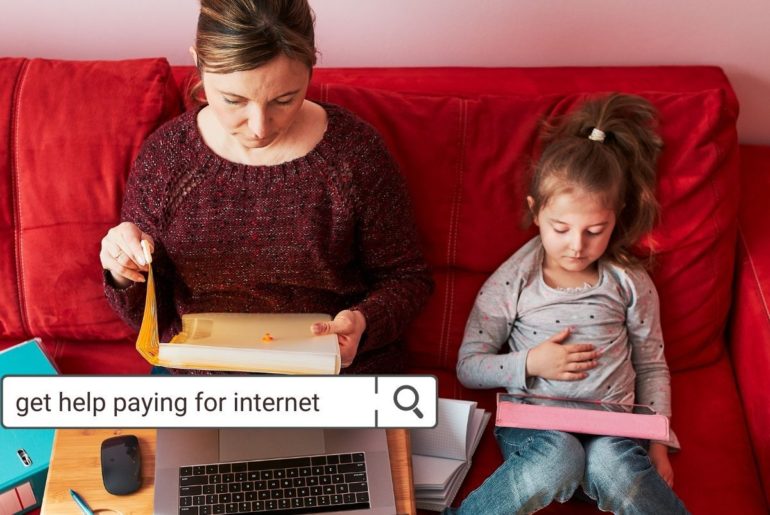The Federal Communications Commission (FCC) has launched the Emergency Broadband Benefit (EBB) to help families and households struggling to cover their internet connection costs during the Covid-19 pandemic.
The $3.2 billion program provides a discount of up to $50 per month toward broadband services for eligible households, and up to $75 per month for households on qualifying Tribal lands. This discount can apply to the broadband service itself, as well as equipment rentals like modems. It’s applied directly to the provider rather than paid out to consumers, so if approved you’ll see this as a credit on your monthly bill.
These households can also qualify for up to a $100 one-time discount on a laptop, desktop computer, or tablet from participating providers. Families must contribute between $10 to $50 toward the purchase price.
The program officially starts on May 12, 2021, and will end when it runs out of funds or six months after the Department of Health and Human Services declares an end to the pandemic, whichever is sooner.
Who qualifies?
The discounts are limited to one per “household,” which is defined as people who live together and share money. In some cases, multiple “households” may be under one roof, like in the case of those living in shelters, seniors in assisted living facilities, or multiple roommates living together (but paying their own bills). If that’s the case, they may require an additional “one-household-page” with your application to certify that you’re eligible.
A household is eligible if any member of the household meets one of the criteria below:
- Has an income at or below 135 percent of the Federal Poverty Guidelines;
- Participates in certain assistance programs, such as SNAP, Medicaid, or Lifeline;
- Is approved for benefits under the free and reduced-price school lunch program or the school breakfast program;
- Received a Federal Pell Grant during the current award year;
- Experienced a substantial loss of income due to job loss or furlough since February 29, 2020 and the household had a total income in 2020 (including any unemployment benefits) at or below $99,000 for single filers and $198,000 for joint filers; or
- Meets the eligibility criteria for a participating provider’s existing low-income or COVID-19 program.
You can find more details about who qualifies here.
How to apply:
Applications are being handled via Universal Service Administration Co (USAC), which operates under the FCC. If you think you may be eligible, you can enroll using one of the following methods:
- Contact a participating provider directly to find out what their application process is.
- Apply online (there will be an “Apply Now” button once the program is launched on May 12).
- Print and mail an application with proof of eligibility to:
Emergency Broadband Support Center
P.O. Box 7081
London, KY 40742
If applying via mail, the FCC suggests you fill out the application using black ink and capital letters. They also strongly encourage applicants to include an email address, copies of ID and eligibility documentation, and the “one-per-household page” (available on the USAC website). They will process your application without this supporting documentation, but it can slow down the process if they have to follow up with consumers to get additional information.
Which broadband providers are participating?
The FCC is tracking all providers who are participating in the program; check out the complete list to find one in your state or territory, or search by zip code. Note that not all providers (just about 10 percent) can also provide discounted devices as part of the EBB.
Here’s another bit of good news: You can’t be excluded because of past debt with a provider, and you can always switch to a different authorized provider during the program. Once the program ends, your provider will give notice of the last date or billing cycle you can expect to get a full or partial benefit, so there are no surprise increases on your bill. Then you’ll need to opt in to continue getting services (or select a new service plan) when the program ends, even if you had that same provider prior to being in the program.







